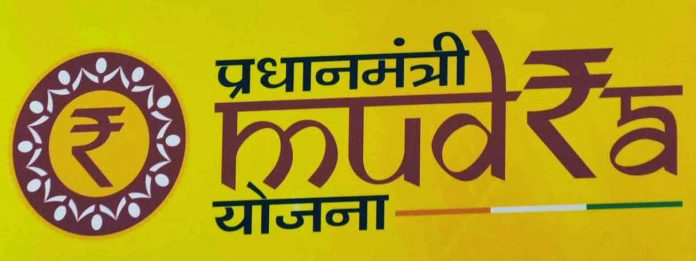What is MUDRA Bank?
MUDRA is the acronym for Micro Units Development and Refinance Agency. This is a new financial organisation that was launched by Indian Prime Minister Narendra Modi on the 8th of April 2015.
This financial organisation’s main purpose is to provide loans and financial assistance through the Pradhan Mantri MUDRA Yojana (PMMY) to mid to small sized businesses that may or may not have corporate backing.
Studies have been seen to indicate that about 90% of the small business sector in India doesn’t have institutional financial support. The MUDRA project, since its inception in 2015 have given out loans amounting to about 1 lakh crores to a large number of small businessmen and organisations.
Vision of the MUDRA scheme
Prime Minister Narendra Modi while launching the MUDRA campaign had said that compared to large industries, the small and medium scale industries provide far more jobs and so by promoting small industries in the country the problem of unemployment can be somewhat solved.
He also praised the integrity shown by some private self-help financial support services in providing loans to needy people. He envisaged the MUDRA scheme as something similar as while the scheme does not bring out any substantial structural changes, it does provide loans and support to a section of the population who were ignored earlier.
Objectives and Responsibilities of the MUDRA scheme
1. Change India to a country of job creators rather than job seekers.
2. Creating policy guidelines for micro/small enterprise financing businesses.
3. Registering, regulating micro-finance institutions (MFI) entities and their accreditation.
4. Create an entrepreneurial and start-up culture in the country so that the number of small and medium scale industries goes up.
5. Assisting lower income groups for developing and growing their small businesses.
6. “Funding the unfunded”. Provide financial and otherwise assistance to non-corporate and Small Business Sectors which don’t have any external assistance.
7. Setting financing practices that help prevent over indebtedness.
8. Framing and running a credit guarantee scheme to provide guarantees to the mudra loans that are given to micro-enterprises.
Mission of the MUDRA scheme
According to the Indian government the primary mission of MUDRA is to “fund the unfunded”. It means, provide financial assistance to small businesses which don’t have any corporate or institutional support.
It is speculated that within a year or two the financial inclusion of the MUDRA scheme will increase greatly. A lot of the major public sector banks in India are making the MUDRA scheme a part of their policies.
The government is also looking to expand the delivery channels in rural areas for the MUDRA scheme. Additionally all Regional Rural Banks will also provide loans based on the MUDRA model. Getting loans through the MUDRA scheme will pretty much be similar to getting other loans from the banks.
Three initiative products have been launched by MUDRA Bank, namely SHISHU, KISHOR and TARUN for signifying the stage of funding needs of organizations. The types of MUDRA loans are the following.
Shishu Scheme
In this scheme loans are provided up to 50 thousand, to start-up businesses. The loan application consists of a one page form.
Kishore Scheme
This scheme provides loans from 50 thousand to five lakh to entrepreneurs. Banks may ask for collateral security and the loan application is a three page form.
Tarun Scheme
In this loans are provided ranging from 5 lakhs to 10 lakhs. Banks may ask for collateral before issuing loans.
MUDRA functions as a regulating and refinancing organisation through state and regional level mediators.
Some of the other MUDRA Offerings include:
1. MUDRA Card, a debit card based on Rupay platform, which are being issued by banks or in association with MFI.
2. Portfolio Credit Guarantee, focused to protect banks against possible defaults by loan borrowers. Also, a default will get guarantee based on its portfolio, which will be up to 50 percent of the total Mudra portfolio of banks.
3. Credit Enhancement Guarantee Scheme
Applying for MUDRA loans
Applying for loans in the MUDRA scheme is much like applying for conventional loans. Even when banks are following the MUDRA model, loan eligibility is not guaranteed to each and every one.
While providing loans the banks will work on the guidelines issued by the Reserve Bank of India (RBI). The decision of whether to ask for collateral security will also be made based on the RBI guidelines.
Winding It Up
I believe that MUDRA Bank will enormously benefit self-employed, micro enterprises, and small businesses across the nation. Mudra Bank will also greatly benefit both Indian business sector and economy.
Also Read:-
PowerTex India Scheme launched by the Union Ministry of Textiles











































